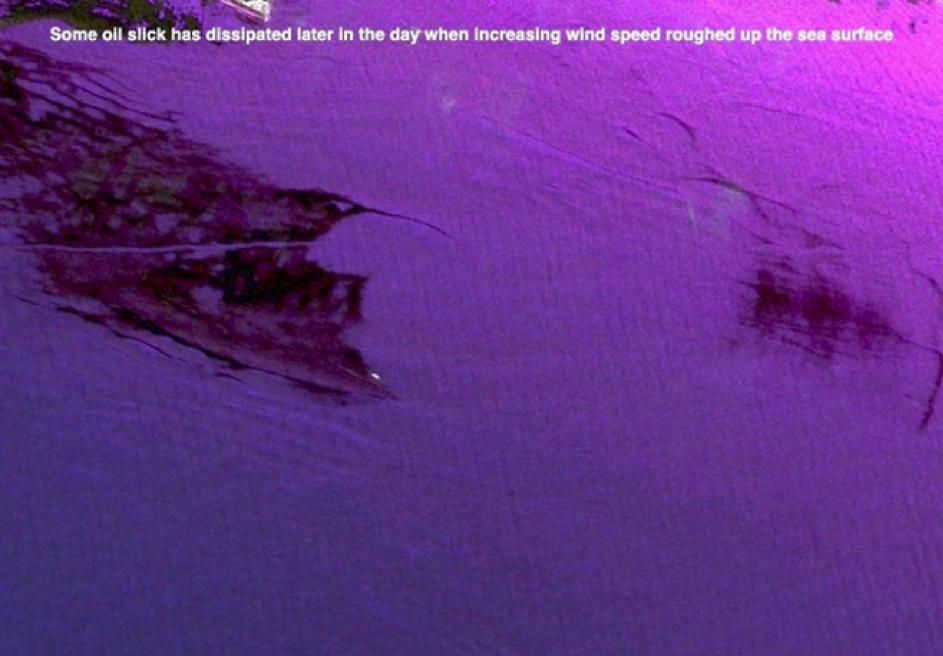The L-band radar aboard the JSC G-III successfully completed the Santa Barbara Oil Slick experiment on 14 May in support of a NASA ROSES grant from NASA’s Earth Science Disasters program, managed by David Green, to develop an algorithm to measure oil slick thickness using SAR to become Operational at the NOAA Marine Pollution Response group. The purpose of this campaign is to validate oil slick characterization algorithms and to prepare for NISAR disaster response to oil spills and major storms. The study site is a natural seep field off the coast of Santa Barbara, CA. UAVSAR observations will be integrated with in-situ data and satellite imagery in the analysis. The two UAVSAR polarimetric color composite images acquired two hours apart show the evolution of the oil thickness with respect to increasing wind speed as seen in radar backscatter. Oil on the sea surface effectively smooths the ocean surface and reduces the radar backscatter compared to the surrounding ocean. As the sea surface was roughed up by increasing wind speed, only the thicker oil slick remained visible in radar backscatter imagery. JPL participation on the study included Ben Holt (329), who was on the vessel, and Cathleen Jones (334) who was onboard during the UAVSAR overflights.


